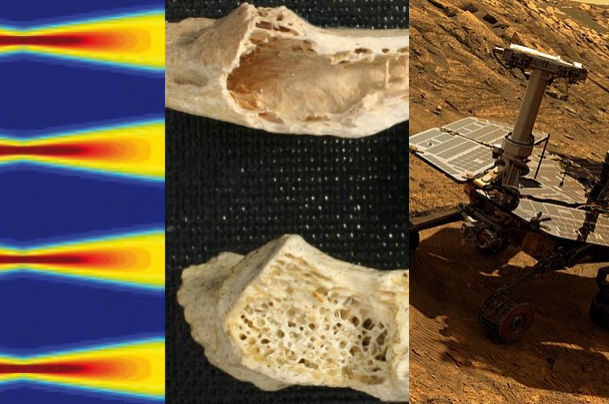The Week In Science: Time Cloaks, Neanderthal Tumors, And Opportunity Rover's Road Trip

This week in science we were let down by the absence of cicadas in New York, saw one of the oldest primates ever dug out of the ground, and heard Buzz Aldrin’s thoughts on the new Will Smith movie. But there’s always a lot more going on beyond what we can cover. Here’s a roundup of stuff we missed this week:
Gray wolves could indeed lose their federal endangered-species listing, confirming reports by the Los Angeles Times, which obtained a draft document about such a move back in April. The U.S. Fish and Wildlife Service has contended the wolf population has recovered enough for management of the animals to rest with the states. [NBC News]
The Opportunity rover has been trucking along for more than nine years across the surface of Mars, long enough to see its twin Spirit drop in its tracks and greet the arrival of a new sibling, Curiosity. Now the NASA robot is taking a 1.5-mile road trip to the south, to find a slightly warmer spot for the oncoming Martian winter. [Associated Press]
Comet Lovejoy plunged into the sun’s atmosphere in 2011, allowing scientists a chance to understand the solar magnetic field that contributes to solar winds and “space weather” that can affect communications satellites. The comet made it through the atmosphere, but disintegrated two days later. [BBC News]
The writings of medieval monks in Ireland are helping scientists understand the connection between volcanic eruptions and cold periods on the Emerald Isle. [ScienceNow]
It’s almost too serendipitous to be true: The same week that Guardian writer Glenn Greenwald lifted the curtain on the U.S. National Security Administration’s PRISM program, Purdue University researchers have found a way to “cloak” data in real-time. The device generates waves inverse to the data being transmitted, giving the appearance that there are no data at all. One catch, though -- whatever’s cloaked is unretrievable. But future designs could lead to more-secure fiber-optic communications. Back to the drawing board! [Verge]
The world’s oldest known bone tumor was found in a 120,000-year-old Neanderthal rib. [National Geographic]
A Stanford University chemical engineer has developed a thin, postage stamp-size heart monitor to make it easier for doctors to monitor a patient’s pulse. Current monitors called intravascular catheters are bulky and carry a risk of infection, making them less than ideal for babies or the very ill. [Stanford University]
The gestures of baby apes and baby humans are remarkably similar. Psychologists at the University of California at Los Angeles found in a recently published study that infant humans, bonobos and chimpanzees all point with their fingers or heads, and raise their arms to ask to be picked up. [UCLA]
A weird science blast from the past: Science blogger scicurious dug up a paper from 1976 describing a moth with a very unfortunate (at least from our human perspective) existence. Cryptoses choloepi hangs out on sloths, with as many as 130 resting on a single individual. The adults probably eat skin secretions off the sloth, which sounds gross enough, but the baby moth larvae seem to prefer the taste of sloth poop to all else. Coprophagy, or poop-eating, is actually a pretty decent strategy, it turns out -- the waste from herbivorous animals contains a lot of nutritious plant material that passes through undigested. [Scicurious]
© Copyright IBTimes 2025. All rights reserved.





















